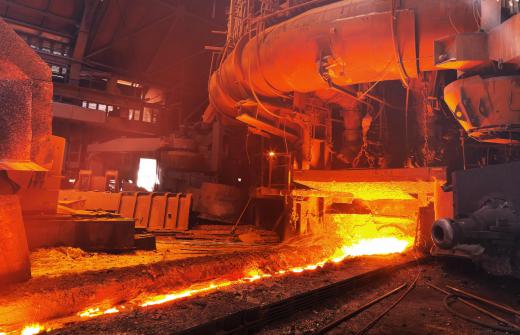Sand casting is a process of using sand as the primary material to mold various metallic products. This molding method is very efficient because sand is a refractory material, which means it can withstand very high temperatures. It is also a very economical process, as it requires less cost and technology.
The first step in the process of sand casting is to prepare the molding container. The container can be made of either wood or metal, in which an embossed pattern is placed. The sand is then poured over the pattern. Other elements such as water and clay are usually added to make the sand more compact and solid.

There are two common methods of solidifying the sand. The first approach is using green sand. The word “green” does not refer to its color, but is used as an indication of its wetness. To avoid the sand from being too runny, only 2 to 4 percent of water is used. A green sand casting generally produces a rough surface on the finished metal product.
The air-set approach of sand casting is more commonly used, especially in factories and foundries. This method uses dry sand, along with other ingredients such as clay and adhesive, to produce a cast. As the mixture is poured in the container, it is frequently compressed to avoid holes. Sometimes, the container is even vibrated to make a smooth and even casting. Many manufacturers prefer air-set casting because it creates a smoother texture on the finished product.
For three-dimensional or irregular figures such as a cube or a metal hammer, a two-part casting mold is used. Both the upper and the bottom part of the mold contain halves of the pattern. When the parts are sealed together, the hot metal is poured through a hole called the “gate,” and the metal is contained in the compartment until it cools and solidifies.
The sand casting is usually destroyed after each use, but the sand itself can be recycled to produce another casting. This long process becomes a disadvantage if a product is to be produced in great quantities in a short period. Usual metals that are cast are aluminum, cast iron, tin, and steel. Even bronze and copper can be sand-cast. Many metal tools, plumbing, and even car parts are made using sand casting. Reports in 2003 show that more than 70 percent of metal castings are created by sand casting.
